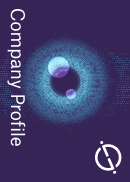At the ongoing American Society of Clinical Oncology (ASCO) Annual Meeting 2024, a practice-changing victory for Bristol Myers Squibb’s Opdivo (nivolumab) and Yervoy (ipilimumab) in melanoma was revealed as the results of the investigator-initiated, open-label, Phase III NADINA trial (NCT04949113) were presented at the plenary session on 2 June. The trial evaluated Opdivo + Yervoy as a neoadjuvant therapy in resectable, stage III melanoma patients, followed by a lymph node dissection. Patients who failed to achieve a major pathological response (MPR) were then subject to an adjuvant therapy with Opdivo, or Novartis’ Tafinlar (dabrafenib) and Mekinist (trametinib) if a BRAF V600E mutation was present.
With a median follow-up time of 9.9 months, the 12-month event-free survival (EFS) for the neoadjuvant arm was 83.7% (hazard ratio [HR] 0.32) versus 57.2% in the adjuvant comparator arm. The EFS benefit was consistent in patients with or without BRAF mutations. Notably, 59% of patients achieved an MPR after just the neoadjuvant treatment. Still, the neoadjuvant arm had a higher occurrence of Grade 3 or above treatment-related adverse events (TEAEs) at 29.7% versus 14.7%. As the first immune checkpoint inhibitor (ICI) Phase III trial in such a setting, the results of the NADINA trial transformed the melanoma treatment paradigm by validating the value of PD-1/CTLA-4 inhibitors before surgery. However, exhausting these ICI options early on in the treatment journey creates a new question on treatment sequencing for patients who would progress to the metastatic stage.
When presented at ASCO two years ago, the investigator-initiated, Phase II SWOG S1801 (NCT03698019) was the largest clinical trial to validate the use of immunotherapy (IO) in the neoadjuvant setting for melanoma patients, where MSD’s Keytruda (pembrolizumab) monotherapy was evaluated. The 24-month EFS was 72% and 49% for the neoadjuvant and adjuvant arm, respectively, while the grade 3 or above TEAE rate in the neoadjuvant arm was 12% (versus 14%).
The toxicity of the Opdivo + Yervoy combination has been a common concern shared by physicians. As the risk of surgery-related severe TEAEs was very similar (14.1% versus 14.4%) in both arms, the addition of the CTLA-4 inhibitor likely contributed to the doubled occurrence of severe TEAEs compared to the Opdivo adjuvant control in the NADINA trial. Still, a closer inspection of the patient disposition suggests its neoadjuvant use is safe and does not interrupt the following surgery. Only three out of the 212 who started the neoadjuvant could not progress to surgery due to toxicity. With the remarkable EFS benefit across subgroups, high-risk melanoma patients would receive the most out of this regimen, while low-risk patients may remain on neo/adjuvant PD-1 monotherapy. Still, neither of the trials was able to provide evidence of overall survival (OS) benefit.
Treatment sequencing for patients progressing to metastatic disease is another concern for physicians. In the current National Comprehensive Cancer Network (NCCN) guidelines, anti-PD-1/CTLA-4 immunotherapies and anti-BRAF V600 targeted therapies are the current frontline standard of care (SOC). The NADINA regimen exposes patients to the two prominent IO mechanisms early on, and thus there would be a possibility of diminished efficacy for these therapies when melanoma returns as a metastatic disease. BMS’s PD-1 and LAG3 inhibitor co-formulation Opdualag (nivolumab and relatlimab) is going to become another prominent first-line choice for metastatic melanoma, as Opdualag proved its superior OS and overall response rate (ORR), over Opdivo alone, in its Phase II/III RELATIVITY-047 trial, including patients who received neoadjuvant/adjuvant therapies with the above mechanisms of action. Iovance Biotherapeutics’ tumor-infiltrating lymphocyte therapy (TIL) Amtagvi (lifileucel) may see a more active role in the second line, yet its uptake is restricted by its higher cost of therapy and patients’ access to dedicated treatment centers.
The neoadjuvant use of Opdivo + Yervoy in melanoma may stay off-label as BMS does not seem to have a filing roadmap for the combination in this setting. Instead, in the melanoma space, the company is focusing its effort on the lifecycle management of the Opdualag franchise. BMS is conducting the Phase III RELATIVITY-098 trial on Opdualag in the adjuvant setting, in addition to the Phase III RELATIVITY-127 trial on subcutaneous Opdualag in the first line. The estimated data readout of these trials spread across late 2025 and 2026. Apart from market cannibalism from their inhouse peer, there is a threat of market erosion from Philogen and Sun Pharma’s intratumoral injection Nidlegy (daromun). The Phase III trial (PIVOTAL) results of the candidate were presented in an oral abstract session on May 31, which showed a 12-month recurrence-free survival (RFS) of 57.5% (HR 0.59), and a grade 3 or above TEAE rate of 31.3%.
Access the most comprehensive Company Profiles
on the market, powered by GlobalData. Save hours of research. Gain competitive edge.

Company Profile – free
sample
Your download email will arrive shortly
We are confident about the
unique
quality of our Company Profiles. However, we want you to make the most
beneficial
decision for your business, so we offer a free sample that you can download by
submitting the below form
By GlobalData
<!–
–>
Visit our Privacy Policy for more information about our services, how we may use, process and share your personal data, including information of your rights in respect of your personal data and how you can unsubscribe from future marketing communications. Our services are intended for corporate subscribers and you warrant that the email address submitted is your corporate email address.
- SEO Powered Content & PR Distribution. Get Amplified Today.
- PlatoData.Network Vertical Generative Ai. Empower Yourself. Access Here.
- PlatoAiStream. Web3 Intelligence. Knowledge Amplified. Access Here.
- PlatoESG. Carbon, CleanTech, Energy, Environment, Solar, Waste Management. Access Here.
- PlatoHealth. Biotech and Clinical Trials Intelligence. Access Here.
- Source: https://www.clinicaltrialsarena.com/analyst-comment/asco24-practice-changing-win-for-opdivo-combo-in-neoadjuvant-melanoma/
